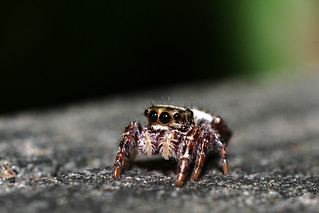It has been one and
a half months since my last confession.
This blog, for me, is a confession of sorts. I get
to say what I’ve been doing, haven’t been doing, and what I should be doing
better. Discussing different topics that mean something to me is a beautiful,
double-edged source of release. On one hand, I get to get things off my chest.
However, I always feel like moving on to the next experiment once I’ve posted
on my blog. There’s always the next subject. This isn’t really bad, since it
keeps me on my toes and trying to learn as much as I can. But at the same time,
I would like to concentrate on one subject at length to truly gain an
understanding, a deeper connection if you will, of myself as a person and my
subject as.. well, as something more than a decent image.
Most of my time has been spent making nature photos. Part of
that has to do with nature not complaining or yelling at me when making its
photo. Nature sits still but is always changing, so each day holds something
new. It’s fun to take scenes out of context; I like to develop characters out
of inanimate scenes. With all that said, this post is the first of many
regarding this subject, but I have a separate project in mind as well.
On my path to create new images and move beyond what I’ve
already done, I started Macro photography a couple of months ago. In
photographic terms, it’s where the subject of your photo is depicted at life
size when compared to your sensor, or larger than that. An insect that is 5
millimeters long would be 5 millimeters long on your sensor; this would be 1:1
or 1x magnification. One attractive aspect to Macro photography is that you can
find subjects in your own house or backyard. A few square feet of grass or
shrubs can yield dozens of photographic subjects, or even on your front stoop!
My only issue when starting was that I couldn’t afford to
buy a new lens dedicated to macro. I challenged myself to spend no money in the
pursuit of this new genre. After a considerable amount of research, I opted to
use my vintage lenses to get the magnification I needed. I started with a 35mm
lens reversed onto a 135mm lens, which resulted in roughly 3.5x magnification.
The results were instantly intriguing. A few millimeter-long insect/arachnid
now filled the frame. This was incredible, and I knew I was on the right track.
After experimenting with this setup at different focus ranges and apertures,
there were two issues. First, the depth of field was ridiculously shallow. At
decent apertures I had maybe 1 to 2 millimeters in focus. This made it beyond
difficult to get little creatures in focus. The second issue was that the 135mm
I own is a pretty beat-up lens. It has very large blemishes, scratches, and is
extremely soft. At this magnification, those imperfections are also magnified.
.jpg) |
| Jumpy the Spider |
As you can see from the above photo, I needed a setup that
yielded better optical results. I own a 2x Soligor tele-converter that cost $12 at a flea market, but the results were
awful. The single piece of glass in there was, quite honestly, piss poor. I got
the idea to try and remove that glass. Internet searches were made in vain; I
was on the verge of hammering out that glass. My phone has a video-recording
feature, and part of the feature is to record with the flash continuously on.
With this, I used the phone as a magnifier to take a closer look at the
tele-converter. With this method, I saw there were two notches at
opposite ends of the lens element. I used a tiny pair of needle-nose pliers,
each side pressing into each dot, and rotated the lens until it was out. So now
my tele-converter is an extender (I can now focus even closer to my subjects
with no optical loss, only less light hitting the sensor).
My first tries were with a 50mm screwed in; this yielded the
first photo in this blog post. Not 1:1, but neat nonetheless. All of this was
with one goal in mind: to reverse the 35mm lens onto the modified
tele-converter to hopefully reach something a little bit better than life size
magnification.
On my next post I’ll be discussing
what I ended up with as my lens setup, photo samples, work-arounds, and the
light modifier I built.
Thanks for stopping by!


No comments:
Post a Comment